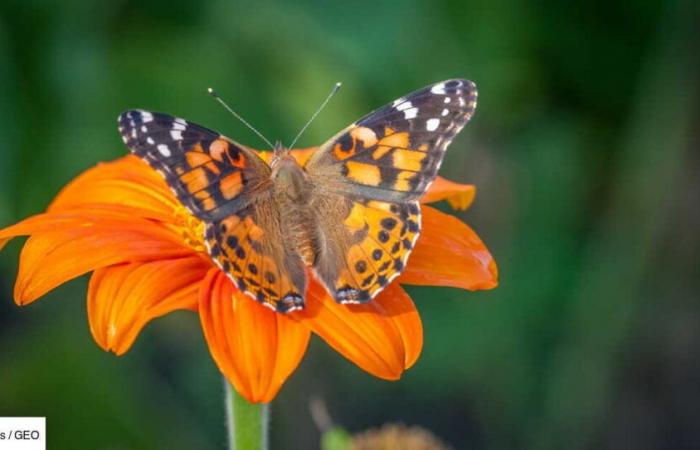When it comes to collecting immense amounts of data, scientists can only rely on the goodwill of science enthusiasts. This is what Gerard Talavera, an entomologist at the Botanical Institute of Barcelona, did in 2019 to study butterfly migration Vanessa Cardui.
Like trillions of other insects, these animals with little-known behaviors migrate around the globe every year, sometimes over several generations.
The precious help of citizen biologists
As reported by the Popular Science site, the Spanish researcher’s team had just realized at the time that they could track these animals by analyzing the pollen that remains attached to their bodies when they land on a flower to drink. of its nectar.
But since scientists cannot be everywhere or predict butterfly migrations, they called on amateur biologists all over the world. They then collected butterflies with nets, immersed them in an alcohol-based mixture and sent them to the Barcelona laboratory.
The most magnificent, colorful and surprising butterflies
The scientists collected the shipments, took the pollen traces and sequenced part of the DNA contained in this pollen using a unique identification method for each plant species: the “metabarcoding”.
Thanks to its extreme precision, researchers were able to retrace the journey of these butterflies, also called Beautiful Lady or Thistle Moths. “It’s as if we put a GPS on them”explains Gerard Tavera to our colleagues.
264 butterflies collected in 10 countries
The experiment began in March 2019 in the Middle East, at a time when the Vanesses were experiencing a reproductive boom that occurred occasionally. The first citizen biologists take their samples and send them. While the team from the Botanical Institute of Barcelona works, other samples arrive from Eastern Europe, then from Northern and Western Europe. In November, butterflies are collected and sent from Morocco.
In total, researchers recovered pollen from 398 different plants, from 264 butterflies collected in 10 countries over seven months. And the results are stunning. Gerard Tavera’s team discovered that the Painted Lady butterflies caught in Russia, Scandinavia and the Baltic countries are probably the descendants of those from the Middle East.
Then these swarms spread to Western Europe, where they experienced a new population boom, before crossing the Mediterranean to arrive in Morocco.
A threat to crops
Even more surprising, the researchers applied this method to Painted Lady butterflies found in French Guiana, on the South American coast, even though they are not supposed to live there. The study of pollen has proven that these insects crossed the Atlantic Ocean in around eight days of flight. This is the first crossing of this ocean by an insect that has been officially proven by science.
These migrations, however, worry some observers. And for good reason, butterflies don’t just transport pollen. They can also carry fungal diseases that are devastating to certain crops. At a time when climate change threatens food security, this represents a real danger for human beings.






